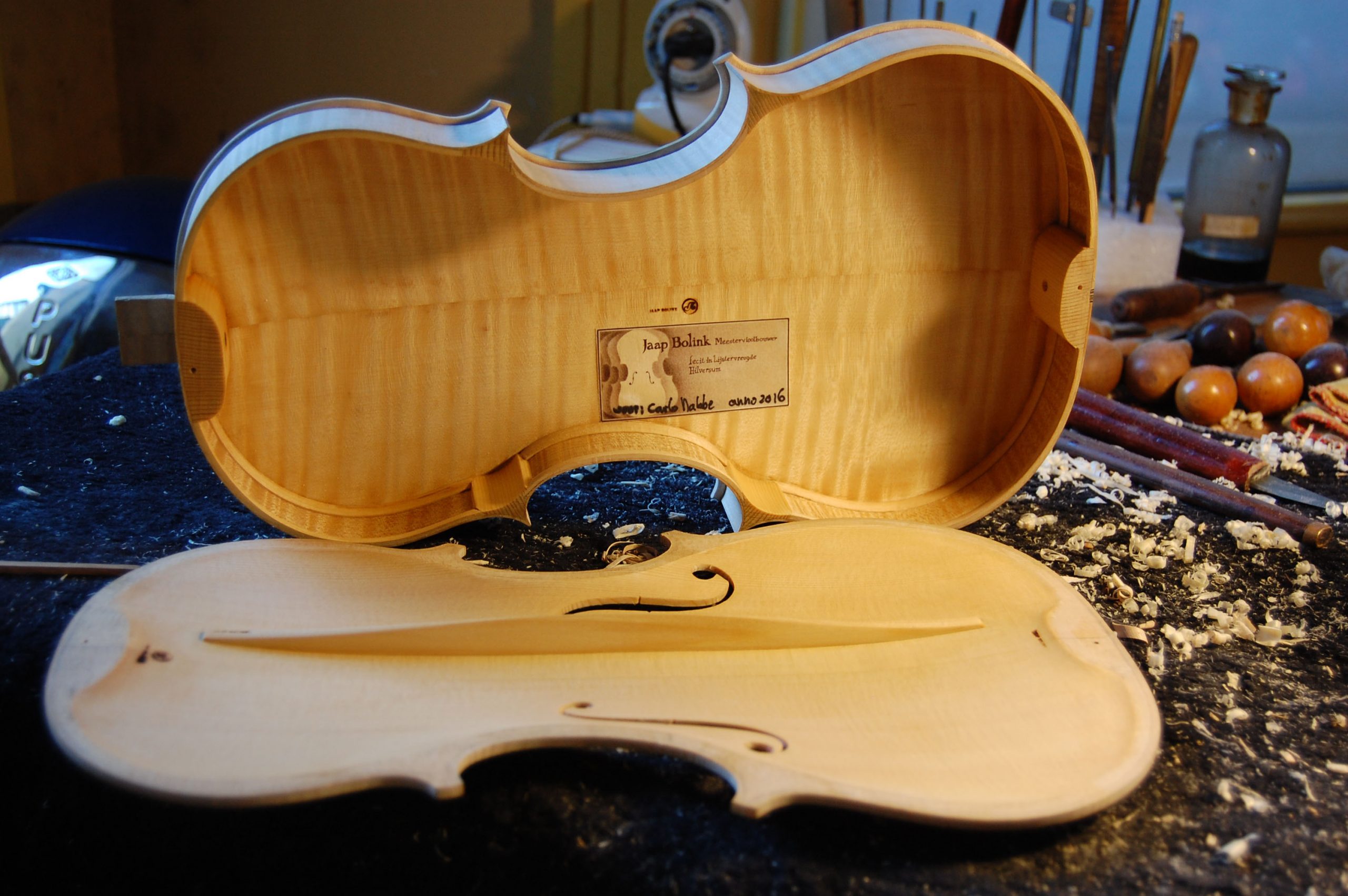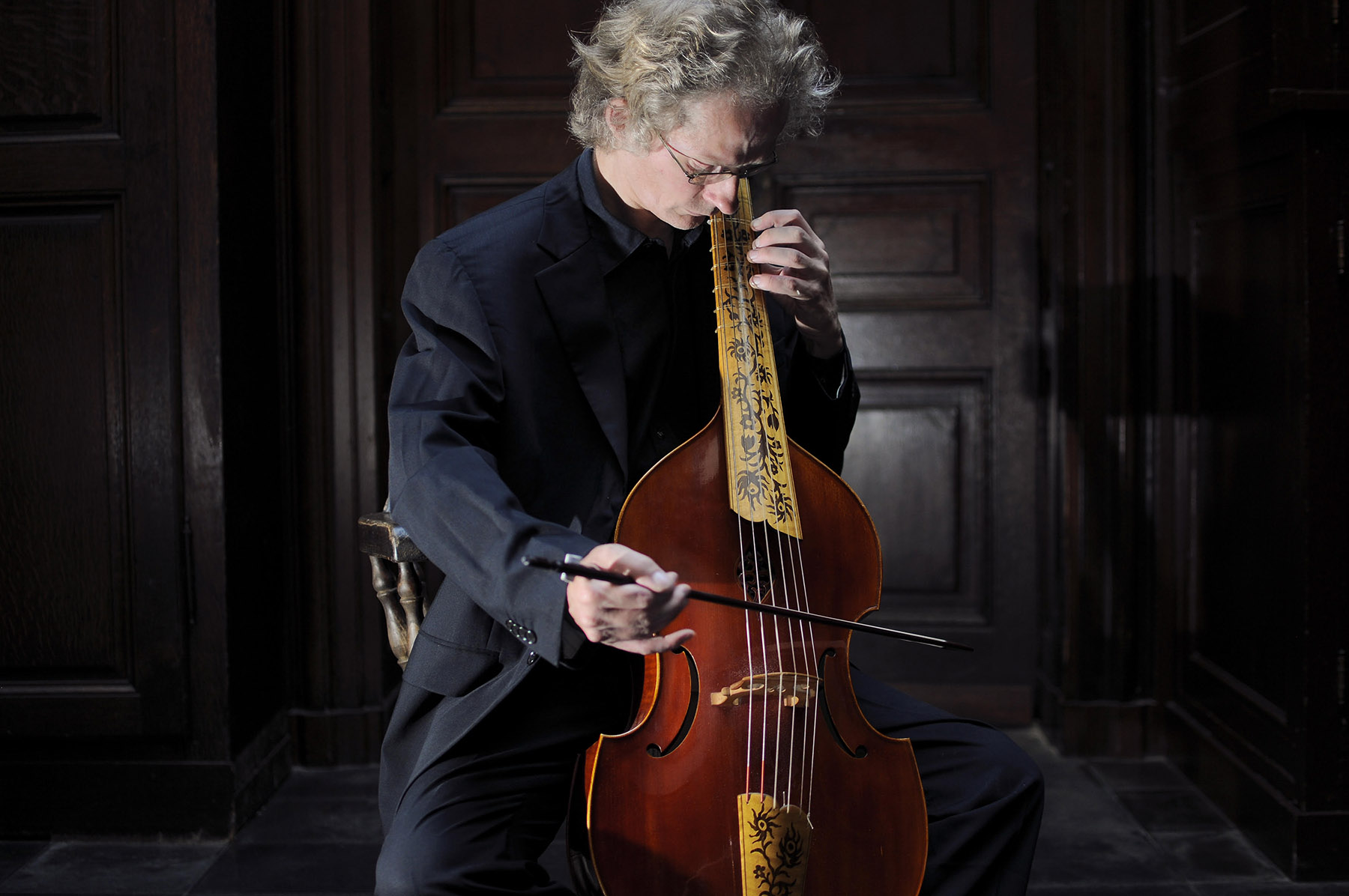
Jaap Bolink – Hilversum
“As far as romanticism is concerned, what is more romantic than having something specially made for you?”
Jaap Bolink, born in Enschede on 7 February 1946, is the son of artist-violin maker Jan Hendrik Bolink. He made his first violin when he was thirteen. From 1963 until 1967 he went to the famous violin making school Mittenwald in Germany. He then worked as an independent violin maker in Amsterdam and as chef d’atelier in the workshop of Arnold Dolmetsch in England. In 1970 he received his masters in Mittenwald and his work was awarded a gold medal. Since 1973 Jaap Bolink has lived and worked in Hilversum, together with his wife Annelies Steinhauer, who is also a violin maker. He is primarily concerned with making new instruments. From 1987 to 1997 Jaap Bolink was secretary of the NGV (Dutch Violinmakers Association) , and since 1997 has been chairman till 2014.
“When I was five, I already knew I wanted to be a violin maker but I would usually add, very cautiously ¨and an artist”. I saw that combination the whole day because my father was trained as a painter and later qualified as a violin maker. He had a workshop in Enschede. When I was thirteen I made my first violin under his supervision. In 1963 I went to the violin making school in Mittenwald, a reputable and very sound training course. You really do need such a good technical basis in order to be able to work out your musical and acoustic ideas.
I used to play the violin and now I play the cello. As a violin maker you certainly don’t have to be a great musician, but you must be able to play all the instruments and judge them. Also you have to be crazy about music, have your own ideal sound, how else can you make good instruments? Otherwise it’ll always be pure chance if you produce something good. That ideal sound does change during your life. When Annelies and I began in Amsterdam, there was hardly anybody who made a living making new violins. We were very idealistic: we wanted to make instruments that were just as good as the old masters and moreover, affordable. We really had to struggle hard for that. You can hear that struggle, that idea of “I’ll give them something to hear”, very clearly in my early instruments. They have an enormous power. I still think that an instrument must be very powerful, but it must have more than just power. You must be able to play everything on it, from baroque to modern music, and you must be able to whisper on it too.

Clients can select the wood for their instruments themselves from our stock. They can also choose between a number of my own models and several colours of varnish, but they will have no involvement with the design. I do what I want to do as far as that’s concerned. I look for my own form within the margins dictated by tradition. I like to vary the scrolls, the f-holes, that sort of thing, therefore I hate copying. Of course, our profession is a very traditional one, but that tradition has always implied that people developed their own forms within it.

I have always been a great advocate of new instruments, without wanting to underestimate the old masters. Indeed, they are our examples and our source of inspiration. However, I still get incensed when I’m confronted with the myth that, by definition, old is better than new, expensive is better than affordable. That can sometimes take on absurd forms.
For example, a musician might say he is looking for something “for about 50.000 euros”, rather than discussing the sound he wants! That myth is kept alive in all sorts of ways. For example, a Stradivari might be mentioned on a CD cover but a modern instrument isn’t. I can understand it, to a certain extent: an old instrument appeals enormously to the imagination, there’s a certain romanticism about it. But often it’s merely a question of status and you can easily see through that.
Time and time again new instruments come along which are just as good, if not better, than the old. And as far as romanticism is concerned, what is more romantic than having something specially made for you? An instrument for which you, yourself, have selected the wood, which you have discussed, which from the first moment becomes part of you and, moreover, lasts for centuries after you are gone?
text – Ellen Hooijen –


Musicians I built for include:
Yke Viersen – cello; Mieke Honingh – altviool; Esther Apituley – altviool; Ernst Grapperhaus -alt; Rudolf Koelman – viool; Peter Korpershoek contrabas; Ernst Reijseger – cello; Quirine Viersen – cello; Rudolf Senn – contrabass; Herman Salomon – viool; Frank Dolman – contrabas; Casper Bergsma – viool; Christian Louwens – cello; Lenian Benjamins – cello; Frank Rutgers – cello; Bart van Rosmalen – cello; Giny Busch – viool; Isabelle van Keulen – viool en altviool; Jeroen den Herder – cello; Saskia Viersen – viool; Olof Groesz – cello; Louis van den Hoonaard – cello en vedels; Pablo Kleinsman-viool; Truls Mørk – cello; Michael Gustorff – viool; Maartje Maria den Herder- cello; Jean Lamon – barokviool; Anthony Woodrow – violone; Angelos Repapis – contrabas; Thomas Brennstrup – contrabas; Annemijn den Herder – altviool; Gijs Kramers – altviool; Sander van Berkel – cello; Daniel Pareira de Oliviera – contrabas; Joannes Bergsma- cello; Ingrid de Vries – viool; Michael Gustorff – viool; Claire Bleumer – cello; Christaan van Hemert – cello; Jasha Bordon-cello; Margarita Bieberbick-viool; Hans Roelofsen – contrabas en violone; Frank Wakelkamp – cello en cello-piccolo, viola da gamba; Carlo Nabbe – viool; Silvio Dalla Torre, contrabass; Frank Rutgers – cello; Henk Lambooij – cello; Marta Lopez Vega – viool; Isabel Martin-viool; Rolin van Opstal – viool; Julie Stier-cello; Wouter Huizinga – altviool; Berry van Vugt – viool; Anna Badalian – viool;………..
© vioolbouwers.nu 2020
Privacy Policy
Jaap Bolink
Heuvellaan 6
1217 JM Hilversum
The Netherlands
Telephone :
Landline + 31(0)356212890
Mobile + 31(0)628275778
info@vioolbouwers.nu
